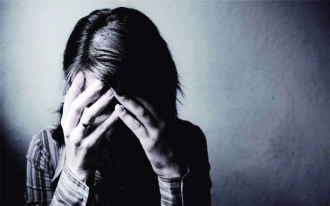Misogynistic violence in India is a fact which is undoubtedly wide-spreading. Any context-free comparisons for this are unsupportive and unhelpful.
There is absolutely no doubt that misogynistic violence against women in India is unfortunately quite widespread. But global comparisons on women’s safety are odious when context-free and unhelpful in presenting the correct picture. The poll published by the Thomson Reuters Foundation on Tuesday which has found prominent coverage in Indian news media outlets clearly falls in that latter category. Naming India as the ‘most dangerous country in the world for women’, which newspapers were quick to point out made it more dangerous than even Afghanistan, Syria, Somalia and Saudi Arabia to name the next four countries on the list, certainly caught eye-balls. Before we dissect the ‘findings’ of the survey, a word on the methodology. A total of 548 ‘global experts’ on women’s issues, 43 of whom are based in India, were asked questions relating to the risks faced by women in six areas: Healthcare, access to economic resources and discrimination, customary practices, sexual violence and human trafficking. India fared worst of all countries included in the survey on the issues of human trafficking, sexual violence and customary (religious/cultural/tribal) practices. In effect, we have the opinion of 43 people, experts though they may well be, to paint India a country as more dangerous for women than:
- Afghanistan, where women live as chattel and in primitive conditions especially outside the tiny bits of the country the UN/Coalition/Afghan Government forces control including the capital Kabul but not its suburbs. The Taliban, perhaps the most cruel, violent and misogynistic collective of the 21st century controls large parts of the country and the Afghan Government is contemplating talks with it because they represent a view subscribed to by millions of Afghans. Afghanistan also has the world’s highest rate of a woman’s lifetime risk of dying of maternal causes.
- Syria, which has been torn asunder by civil war and where women have been forced into the most degrading positions having lost all human dignity amid widespread sexual violence and atrocities committed by the fundamentalist ISIS as well as Damascus’ forces fighting fire with fire.
- Somalia, the African nation where treating women as male property quite literally is a well-established tribal-Islamist custom and female genital mutilation is rampant — 95 per cent of girls between the ages of four and 11 have been forced to undergo it. In fact, so inhuman are the conditions, especially for women, in what is universally recognised as a failed state that reacting to the poll, Somalian women’s activist Maryam Qasim wrote an article in The Guardian newspaper in sheer disbelief at its findings: “Non-existent antenatal care, non-existent medical supplies, extraordinarily poor healthcare and the lack of infrastructure… The inability to enforce law in several areas allows for savages to kill and rape with impunity.”
- Saudi Arabia, where the Guardianship System is on the statute which stipulates that all women must have a male guardian whose consent is needed for a woman to marry, divorce, travel, study, watch a football match, get access to healthcare, swim, decide what to wear, interact with any man other than a close relative… the list is long. Women were only in 2015 allowed to vote or stand for election (at municipal levels) in the Kingdom of Saudi Arabia. Oh, and paying blood money to the relatives of the victim for rape/murder is an acceptable form of justice.
Of course, the levels of violence against women in India are unacceptable and ingrained misogyny results in discrimination and atrocities at various levels. As a non-theocratic, democratic, inclusive state with some of the strongest laws specifically protecting women’s rights apart from ensuring individual freedoms which, however, are routinely undermined by the inability of the state apparatus to effectively implement them as well as our inequitable social structures and the regressive aspects of our ancient civilizational tradition, we have a long way to go. But spare us this load of comparative rubbish.
Writer: Pioneer
Courtesy: The Pioneer








 OpinionExpress.In
OpinionExpress.In















Comments (0)